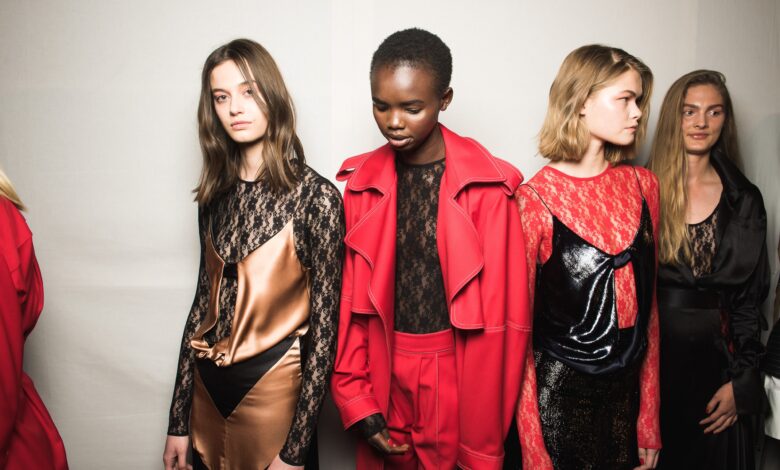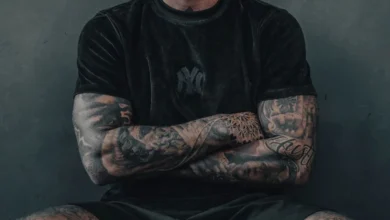FASHION IS FOR EVERYONE, SO WHY AM I STILL DOWNLOADING RUNWAY LOOKS FOR “MEN” OR “WOMEN”?

Table of Contents
FASHION IS FOR EVERYONE
For a person interested in fashion, there is nothing as exciting as imagining and preplanning your future wardrobe based on emerging runway trends.
There’s also nothing as infuriating as feeling discouraged by clothing that caught your eye because, for some reason, you find it wasn’t made for you.
As an editor, it’s frustrating to have witnessed season after season of designers refusing to acknowledge people of different body types, abilities, ethnicities, racial backgrounds, and genders on the runway.
It makes you want to turn away from an industry that seemingly reflects inconsistency through its values. But more than that, it makes you want to speak up.
“NO COLOR OR FABRIC OR CUT IS GENDER EXCLUSIVE.”
Even before the show attendees hear the music thumping and see the lights go down before a presentation, setting the vibe, they’re greeted with notes on their seats that can do one of two things: speak to everyone or define the customer very specifically.
Similarly, before I know what looks I’m going to see from a fashion house when I click on a press release, I often see two different links: “download womenswear” or “download menswear.”
That alone excludes an entire population of people who do not identify as a woman or a man, and it also speaks to the antiquated idea that gender identity should influence clothing preference at all. Words alone are that powerful, and they can be that divisive.
For that reason, I still go back to and admire Stoney Michelli Love’s mission statement for Stuzo Clothing all the time: “Our pieces are gender-free as we prefer to call them because clothes don’t have organs last time we checked.” It aligns with Chromat designer Becca McCharen-Tran’s perspective and purpose as a creator.
Becca put out a full line of swimwear for trans, nonbinary, and queer people for spring/summer 2022, telling me, “Garments are inherently gender-neutral, as they are just objects . . . It’s important that people realize that no color or fabric or cut is gender exclusive.”
Of course, casting comes into play. The Fashion Spot’s New York Fashion Week diversity report for the season states that transgender and nonbinary model appearances accounted for 2.4 percent of castings for spring/summer 2022.
The total number was 30, seen on runways such as The Blonds, Prabal Gurung, Collina Strada, Moschino, Batsheva, Gabriela Hearst, Jonathan Simkhai, and Chromat, of course, which also included one drag queen and one intersex model.
Ultimately
Designers are going to be winning if they show how a skirt — or any item of clothing — as cross dressing can be worn by anyone, instead of just one specific type of person, thereby changing the narrow definitions of gender we’ve seen on the runway.
The labels ahead grasp that simple idea and approach design through a gender-neutral lens, so I’m here to celebrate them. We need to bring visibility to brands that look beyond the binary in order to extend representation into the future.
The main purpose of Inclusive Design is, that everyone can benefit and enjoy it, with or without disability.
There are already many good examples of inclusive design in our daily life in the field of architecture, technology, automation, etc.
Most of us realize that fashion is more than just clothes. It’s not just about wearing what’s in. Fashion influences our judgments of people’s taste, politics, sexuality, class, religion, and even their moral character. It can be a medium for technological and social change – changes in fashion may signal economic and political shifts.
Yet fashion can also trap us.
We can be slaves to fashion if we feel trapped by the roles dictated by the clothes we wear, and we can be slaves to fashion, literally, as in the case of sweatshop workers who make most of the clothes we wear today.
This book explores the diverse and sometimes contradictory aspects of fashion in a series of lively, entertaining thoughtful essays from prominent philosophers and writers.
Topics include:
- What is fashion?
- How do we know what is fashionable?
- Who decides what’s cool and what’s not?
- How is it that clothes shape people the way they do?
- Why does fashion have the power it does?
You won’t look at your wardrobe in the same light again!




